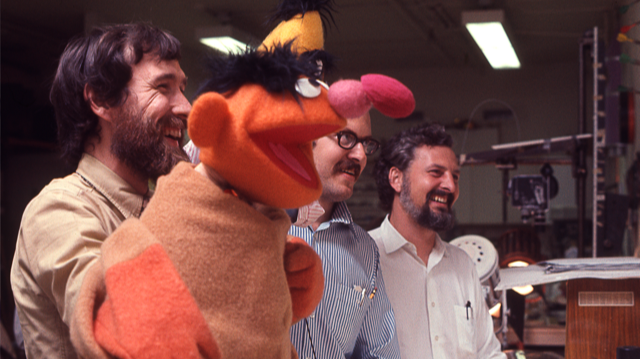
Sundance Film Review: Street Gang: How We Got To Sesame Street
Film Reviews
Street Gang: How We Got To Sesame Street
Director: Marilyn Agrelo
Citizen Skull Productions
Premiere: Jan. 30th 10:00 a.m.
One of my favorite films of the past decade is Morgan Neville‘s documentary Won’t Be My Neighbor?, which chronicles the life and career of Fred Rogers. The only only thing that left me wanting about that film was the fact that, for me, it felt unnatural to watch Mr. Rogers without also watching Sesame Street, as for every weekday of my early childhood, the two shows were the entertainment-and-education equivalent of an essential meal. But this year, director Marilyn Agrelo has finished up that meal with Street Gang: How We Got To Sesame Street.
Based on Michael Davis’ best-selling book of the same name, Street Gang explores how creator Joan Ganz Cooney, original series director Jon Stone and legendary Muppets creator Jim Henson—among other key talents—joined forces to create a children’s television show that would become a groundbreaking cultural phenomenon. Recognizing that kids were utterly captivated by television, these visionaries set out to harness the power of the medium for good—to offer learning rather than products to children. More than 50 years later, the show reaches over 150 countries around the world, continuing to entertain while it educates. Drawing on behind-the-scenes footage and interviews with beloved cast members and crew, the film goes beyond the considerable nostalgic appeal of Sesame Street to tap into the enduring emotional resonance of the program’s core message of affirmation and inclusion—and the promise of preparing the next generation to imagine a better world for us all.
Street Gang is an overwhelming viewing experience that is packed with a variety of emotions. The laughter and joy that it provides are a near constant as it floods you with memories of childhood and gives you hilarious and poignant glimpses of early material and outtakes—the bits where Ernie and Bert and fall out of chair laughing hysterical—and delves deep into the process of developing what may be the most important and influential television series of all time. It also provokes a lot of tears as it deals with the passing of Will Lee, aka Mr. Hooper, as well as Henson. And for me, it brought back so many memories of my late parents, who understood that active viewing along with the children was infinitely more productive than using the television as a babysitter. But it also deals with frustration and anger, from the lack of widespread recognition of the work of director Jon Stone, one of the most crucial creative voices behind the show, and the issues that led lead writer and puppeteer Matt Robinson, to leave, and the story of how Mississippi public television stations pulled the show from the air because it was too racially integrated for their sensibilities.
Street Gang is an epic tale of creativity, talent, tenacity and above all else, love. The interviews with many of the original creative geniuses—both in front of the camera, behind the camera or in the case of many of the Muppet performers, just off to the side—are incredibly illuminating and exciting, and existing interview footage of the major players who have passed include Stone, Henson, composer Joe Raposo and most emotionally, Carrol Spinney, the remarkable man who brought Big Bird and Oscar the Grouch to life, and who left us in 2019. These clips convey the immortality of this staggering achievement in television.
Street Gang: How We Made It Sesame Street is unforgettable, and it’s more than a film—it’s a living document of the work, a monument to those who made it come together and best of all, an educational tool on how to use the medium of television for good and in doing so, to make the world a better place for everyone. –Patrick Gibbs